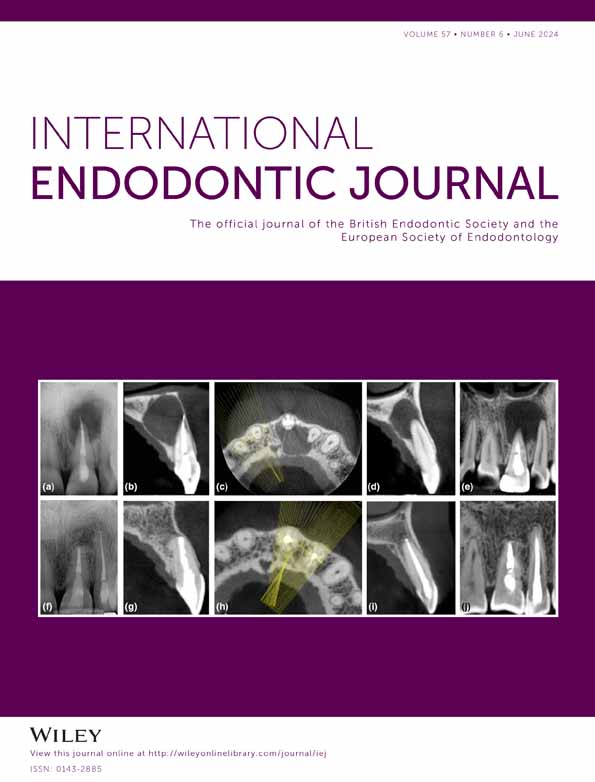In-depth investigation of FAM20A insufficiency effects on deciduous dental pulp cells: Altered behaviours, osteogenic differentiation, and inflammatory gene expression
Abstract
Aim
Loss-of-function mutations in FAM20A result in amelogenesis imperfecta IG (AI1G) or enamel-renal syndrome, characterized by hypoplastic enamel, ectopic calcification, and gingival hyperplasia, with some cases reporting spontaneous tooth infection. Despite previous reports on the consequence of FAM20A reduction in gingival fibroblasts and transcriptome analyses of AI1G pulp tissues, suggesting its involvement in mineralization and infection, its role in deciduous dental pulp cells (DDP) remains unreported. The aim of this study was to evaluate the properties of DDP obtained from an AI1G patient, providing additional insights into the effects of FAM20A on the mineralization of DDP.
Methodology
DDP were obtained from a FAM20A-AI1G patient (mutant cells) and three healthy individuals. Cellular behaviours were examined using flow cytometry, MTT, attachment and spreading, colony formation, and wound healing assays. Osteogenic induction was applied to DDP, followed by alizarin red S staining to assess their osteogenic differentiation. The expression of FAM20A-related genes, osteogenic genes, and inflammatory genes was analysed using real-time PCR, Western blot, and/or immunolocalization. Additionally, STRING analysis was performed to predict potential protein–protein interaction networks.
Results
The mutant cells exhibited a significant reduction in FAM20A mRNA and protein levels, as well as proliferation, migration, attachment, and colony formation. However, normal FAM20A subcellular localization was maintained. Additionally, osteogenic/odontogenic genes, OSX, OPN, RUNX2, BSP, and DSPP, were downregulated, along with upregulated ALP. STRING analysis suggested a potential correlation between FAM20A and these osteogenic genes. After osteogenic induction, the mutant cells demonstrated reduced mineral deposition and dysregulated expression of osteogenic genes. Remarkably, FAM20A, FAM20C, RUNX2, OPN, and OSX were significantly upregulated in the mutant cells, whilst ALP, and OCN was downregulated. Furthermore, the mutant cells exhibited a significant increase in inflammatory gene expression, that is, IL-1β and TGF-β1, whereas IL-6 and NFκB1 expression was significantly reduced.
Conclusion
The reduction of FAM20A in mutant DDP is associated with various cellular deficiencies, including delayed proliferation, attachment, spreading, and migration as well as altered osteogenic and inflammatory responses. These findings provide novel insights into the biology of FAM20A in dental pulp cells and shed light on the molecular mechanisms underlying AI1G pathology.
CONFLICT OF INTEREST STATEMENT
The authors declare no conflict of interest.
Open Research
DATA AVAILABILITY STATEMENT
The data presented in this study are available in the article and supplementary material.




